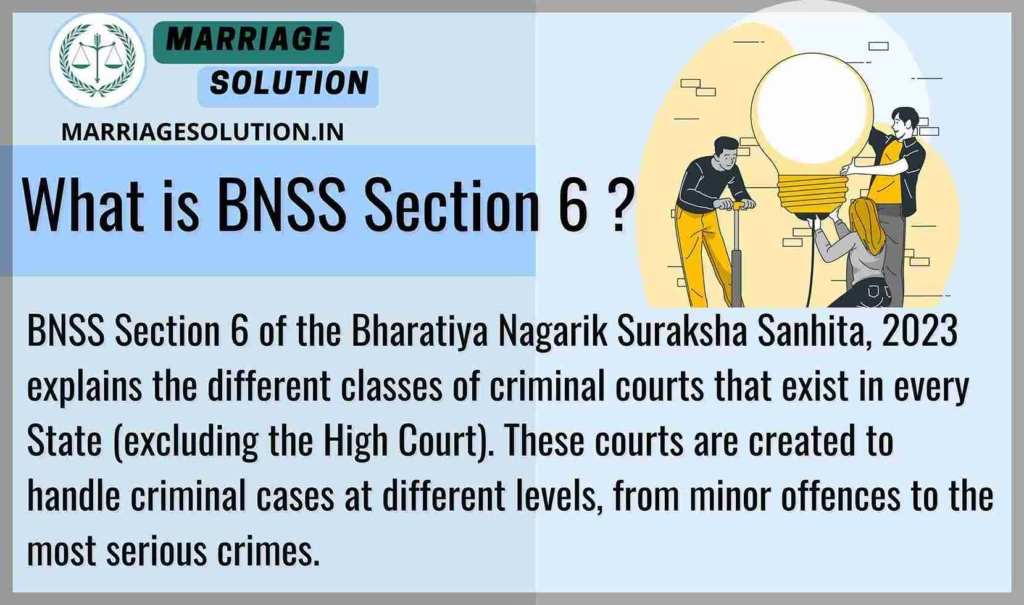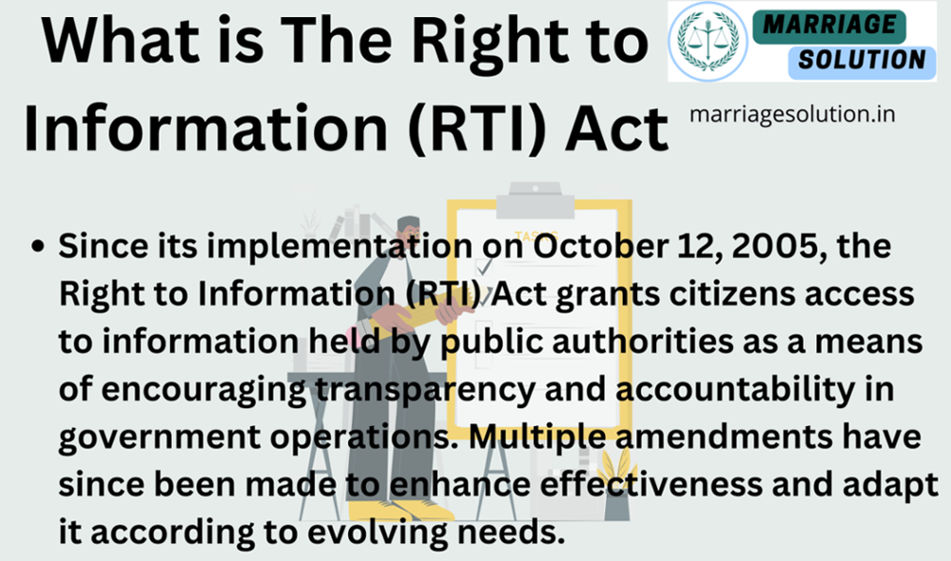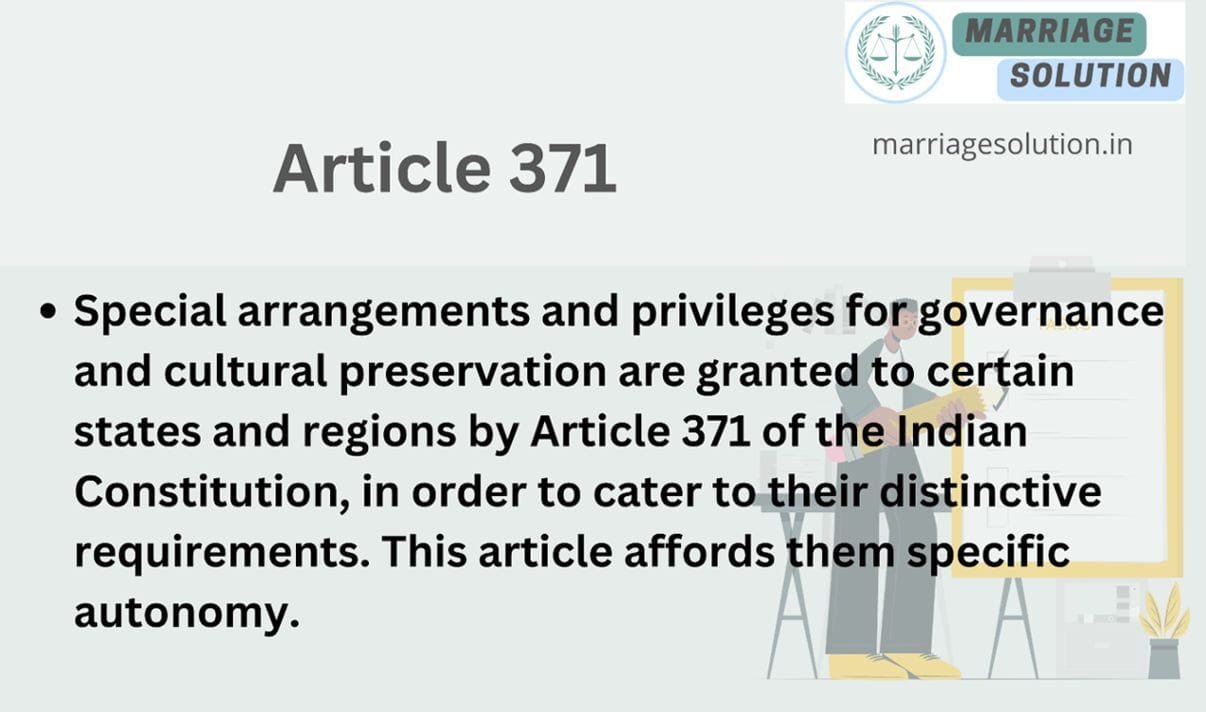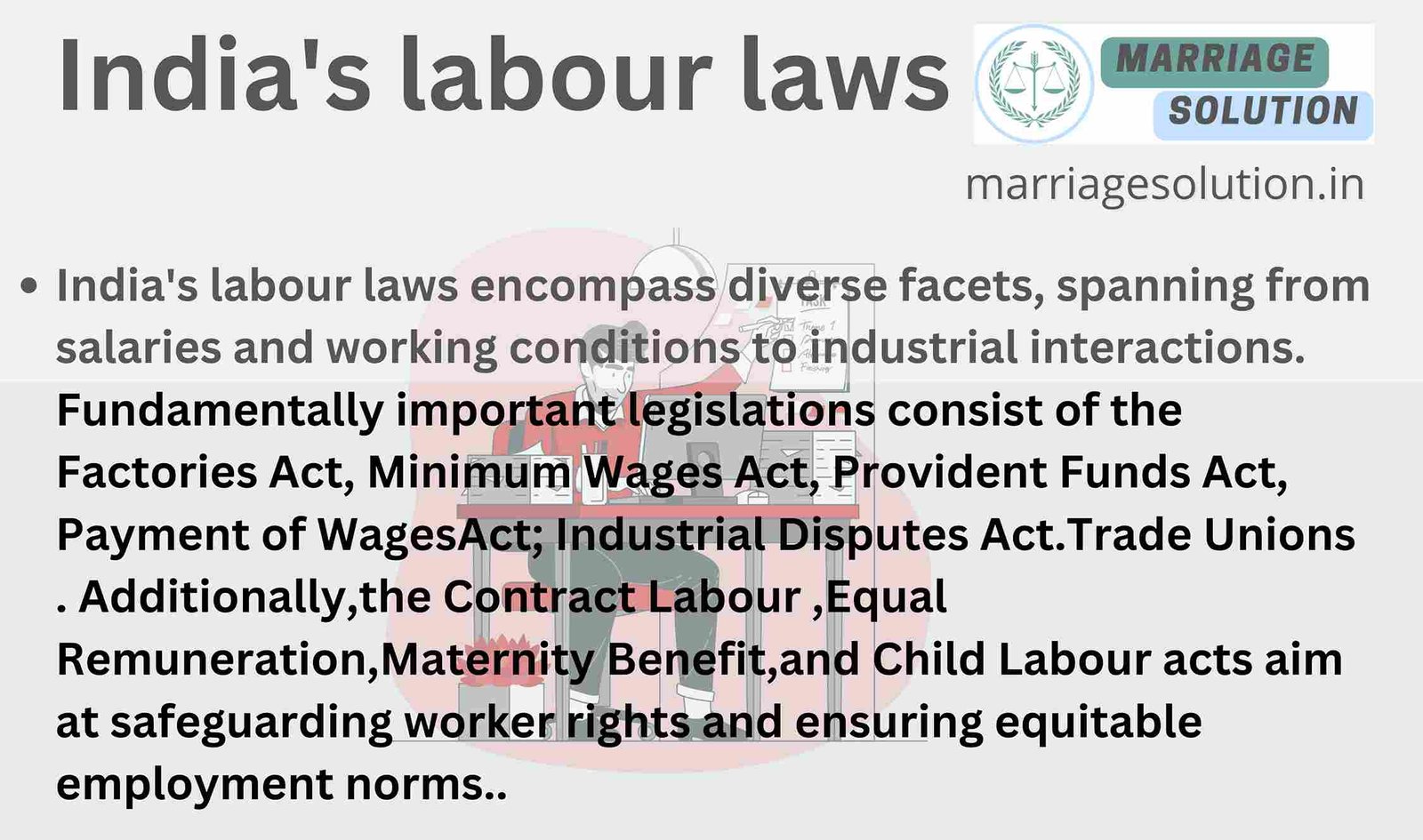Introduction of Section 6 of BNSS
Section 6 of BNSS explains the different types of criminal courts in a State under the Bharatiya Nagarik Suraksha Sanhita, 2023. Apart from High Courts and other courts created by separate laws, every State must have four classes of criminal courts. These include: Courts of Session, Judicial Magistrates of First Class, Judicial Magistrates of Second Class, and Executive Magistrates. Each type of court has a different role and level of power in criminal matters. This structure helps maintain a proper and clear justice system.
What is BNSS Section 6 ?
BNSS Section 6 of the Bharatiya Nagarik Suraksha Sanhita, 2023 explains the different classes of criminal courts that exist in every State (excluding the High Court). These courts are created to handle criminal cases at different levels, from minor offences to the most serious crimes.

BNSS Section of 6 in Simple Points
1). Courts of Session
Courts of Session are the highest trial courts in a district. These courts deal with serious criminal cases like murder, rape, kidnapping, or large-scale corruption. The Sessions Judge heads the court and has the power to give severe punishments, including the death penalty or life imprisonment. Only these courts can try offences punishable with death or life imprisonment unless specially allowed. They work under the High Court’s supervision. Their judgments can be appealed in the High Court.
2). Judicial Magistrate of the First Class
Judicial Magistrates of the First Class handle moderate criminal offences, like theft, cheating, criminal breach of trust, or harassment. They can give sentences up to 3 years of imprisonment and fines up to ₹10,000 or more, depending on the law. These magistrates are often posted in district-level courts. They also handle cases during the early stages like taking cognizance of the offence and issuing summons. They are important for quick and effective justice in regular criminal matters.
3). Judicial Magistrate of the Second Class
These are lower-level courts that deal with minor offences, such as minor assaults, small thefts, or public nuisance. The Judicial Magistrate of the Second Class can give punishments up to 1 year imprisonment or fines up to ₹5,000. Their role is to handle simpler and less serious cases quickly. This reduces the burden on higher courts. They are helpful in maintaining law and order for day-to-day offences at the local level.
4). Executive Magistrates
Executive Magistrates are not regular judges but government officers given judicial powers under certain situations. They handle cases related to public peace, emergencies, preventive arrests, and enforcing curfews or Section 144. They also handle disputes over land or water, or control unlawful assemblies. They help in preventing crimes and ensuring safety in society. Their job is more administrative than judicial, and they work under the control of the District Magistrate or State Government.
Section 6 of BNSS Overview
BNSS Section 6 defines the four classes of criminal courts in every State – (1) Courts of Session, (2) Judicial Magistrates of the First Class, (3) Judicial Magistrates of the Second Class, and (4) Executive Magistrates – apart from the High Courts and other special courts established by separate laws.
1) Four Classes of Criminal Courts in Every State
BNSS Section 6 defines four important types of criminal courts: Courts of Session, Judicial Magistrates of the First Class, Judicial Magistrates of the Second Class, and Executive Magistrates. These courts are separate from the High Courts and are formed to handle criminal cases in a structured way. Each court has different powers based on the seriousness of offences they deal with. This classification helps in distributing cases effectively. It makes the system more organized. Every criminal case is handled by one of these courts based on law. This system supports fast and fair trials.
2) Court of Session – The Highest Trial Court in a District
The Court of Session is the most powerful criminal trial court in a district. It handles serious and grave offences like murder, rape, dacoity, and kidnapping. Only a Sessions Court can give punishments like life imprisonment or death. These courts are presided over by a Sessions Judge. They are also responsible for hearing appeals from lower courts in criminal matters. This court plays a vital role in maintaining justice in high-stake cases. It ensures that serious offenders are punished according to the law. The Court of Session is a symbol of authority in criminal justice at the district level.
3) Judicial Magistrate of the First Class – For Moderate Offences
The Judicial Magistrate of the First Class deals with crimes like cheating, theft, hurt, and certain economic offences. These are not the most serious crimes but are still punishable. This court can give a sentence of up to 3 years in prison and impose fines. These magistrates usually work in bigger towns or cities. They help take the burden off the Sessions Court by handling mid-level cases. This court ensures quicker disposal of cases. It acts as an important link between lower and higher criminal courts. It brings justice to people more efficiently.
4) Judicial Magistrate of the Second Class – For Minor Crimes
This court handles small or minor offences like public nuisance, simple hurt, or quarrels. It has limited power – usually a maximum sentence of up to 1 year in jail and a small fine. This court is important because many criminal cases are minor in nature. It ensures that these small issues are resolved quickly. Judicial Magistrates of the Second Class are mostly posted in smaller towns. They are the first level of courts in the criminal justice system. These courts reduce pressure on higher magistrates and help people get justice close to their homes.
5) Executive Magistrates – Maintaining Law and Order
Executive Magistrates are not full-time judicial officers but are part of the executive (like government officials). Their job is to maintain peace, issue curfews, and stop unlawful gatherings. They have powers under sections like 144 of BNSS (previously CrPC). They do not conduct regular trials, but their role is crucial in preventing crimes. They work closely with the police during emergencies. Executive Magistrates ensure law and order before any situation turns into a crime. They act swiftly and can issue preventive orders to avoid public harm. This makes them key players in public safety.
6) These Courts Work in a Hierarchy
BNSS Section 6 shows that criminal courts are arranged in a clear hierarchy. The Court of Session stands at the top, followed by the First Class Magistrate, then Second Class Magistrate, and finally Executive Magistrates. This hierarchy helps in appealing decisions – if a person is not satisfied with a lower court’s decision, they can go to a higher court. It also helps in the smooth functioning of law. The system becomes well-structured, ensuring that all levels of crime are addressed fairly and step-by-step.
7) Ensures Speedy Trials
By dividing the courts into four categories, BNSS Section 6 ensures that every court has specific types of cases to handle. This division prevents unnecessary delays. For example, a small theft case need not wait behind murder cases. It can be directly handled by a Judicial Magistrate. This speeds up the delivery of justice. People do not have to wait for years to get decisions. Speedy trials are important to build public trust in the justice system. This structure helps courts work faster and more effectively.
8) Promotes Better Access to Justice
BNSS Section 6 helps ensure that justice is available to everyone, even in remote areas. Courts of different levels are spread across districts, towns, and villages. People do not need to travel far for small cases. Minor offences can be handled locally by Second Class Magistrates. Larger crimes go to higher courts. This system is people-friendly. It reduces the burden on citizens and helps them get timely support. Access to justice is a basic right, and this structure helps in achieving that goal.
9) Prevents Overburdening of Courts
If there were no different classes of courts, all types of cases—big or small—would go to the same court. That would create huge delays and increase the burden on judges. BNSS Section 6 solves this by creating separate courts for separate types of cases. This smart division ensures that each court handles only those cases it is meant for. Judges can focus better, and cases can be heard faster. It creates an efficient legal system that can handle the increasing number of criminal cases.
10) Foundation of the Criminal Court System
BNSS Section 6 lays the foundation of the criminal court system in every State. It defines the basic structure, types of courts, and their roles. Without this structure, the legal system would be chaotic. This section gives a clear roadmap to follow for trial, appeal, and maintenance of law and order. It ensures that all types of crimes are addressed, and every citizen has a legal authority to go to. This section is the backbone of criminal justice at the district and state level.
Examples of BNSS Section 6
Example 1:
A person is accused of murder in Delhi. This serious offence is sent to the Court of Session, as it has the authority to handle such major cases under BNSS Section 6.
Example 2:
A small case of public nuisance in a local market is taken up by a Judicial Magistrate of the Second Class, who hears the case and fines the person ₹2,000.
Section 6 of BNSS Short Information
| S.No | 🏛️ Class of Court | Description | Powers |
|---|---|---|---|
| 1. | Court of Session | Highest trial court in a district. Handles serious crimes like murder, rape. | Can give life imprisonment or death penalty |
| 2. | Judicial Magistrate (First Class) | Handles medium-level offences like theft, cheating, etc. | Max punishment: 3 years jail + fine |
| 3. | Judicial Magistrate (Second Class) | Deals with petty crimes like minor assault or nuisance. | Max punishment: 1 year jail + fine |
| 4. | Executive Magistrate | Government officer with limited judicial power to maintain peace, law, order | Can issue orders, curfews, preventive action |
BNSS Section 6 FAQs
BNSS 6
If you need support with court proceedings or any other legal matters, don’t hesitate to reach out for assistance.
Court or any other marriage-related issues, our https://marriagesolution.in/lawyer-help-1/ website may prove helpful. By completing our enquiry form and submitting it online, we can provide customized guidance to navigate through the process.
Right to Information RTI act :Your Comprehensive Guide (Part 1)
The Right to Information (RTI) Act : Explore the essence of the Right to Information (RTI) Act through this symbolic image. The image features legal documents, emphasizing the importance of transparency and accountability in governance. The scales of justice represent…
What is Article 371 of Indian Constitution ?
Article 371 of the Indian Constitution grants special provisions to specific states and regions within India, addressing their unique historical, social, and cultural circumstances. These provisions aim to accommodate diverse needs and protect cultural identities within the constitutional framework.
Indian Labour law : Your Comprehensive Guide (Part 1)
The purpose of labour laws is to safeguard employees and guarantee equitable treatment at the workplace, encompassing aspects such as remuneration, security, and perks. These regulations establish a secure ambiance by imposing minimum wage requirements, ensuring factory safety measures are…
GST :Your Comprehensive Guide (Part 1 – Understanding the Basics)
The Goods and Services Tax (GST) is like a big change in how we pay taxes in India. It started on July 1, 2017, and it’s here to simplify things. Before GST, we had many different taxes, and it could…





